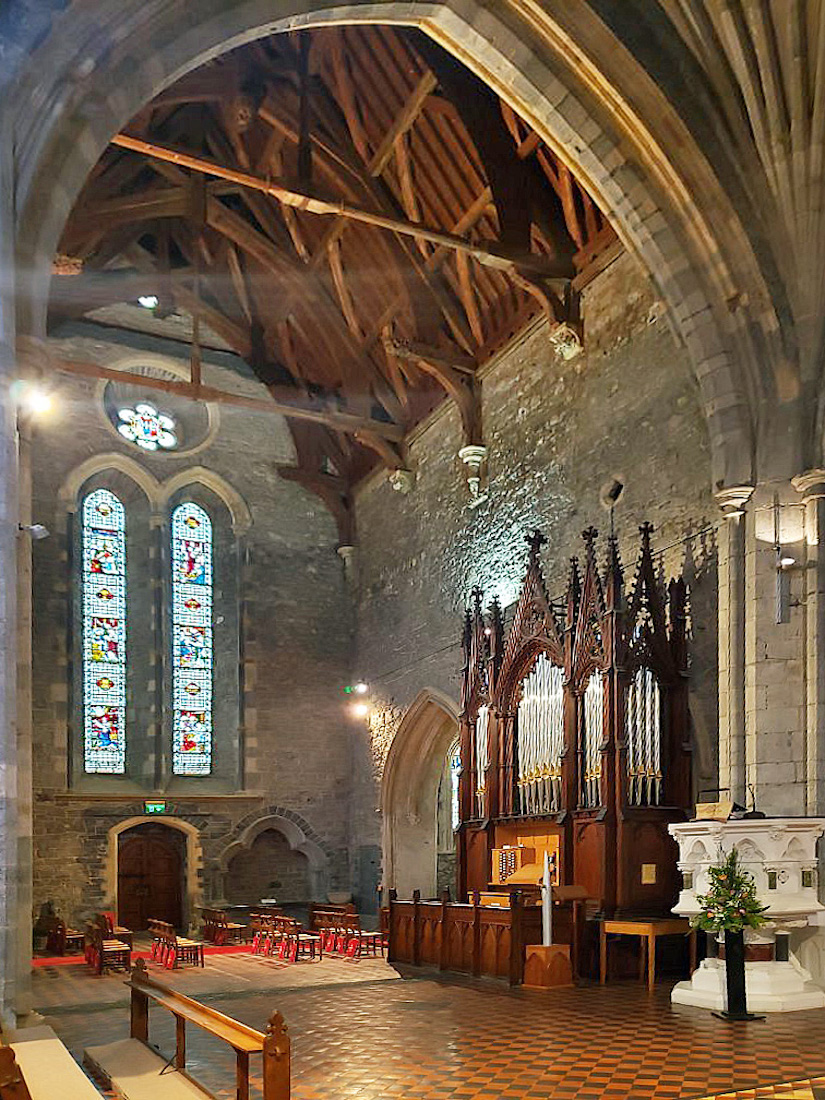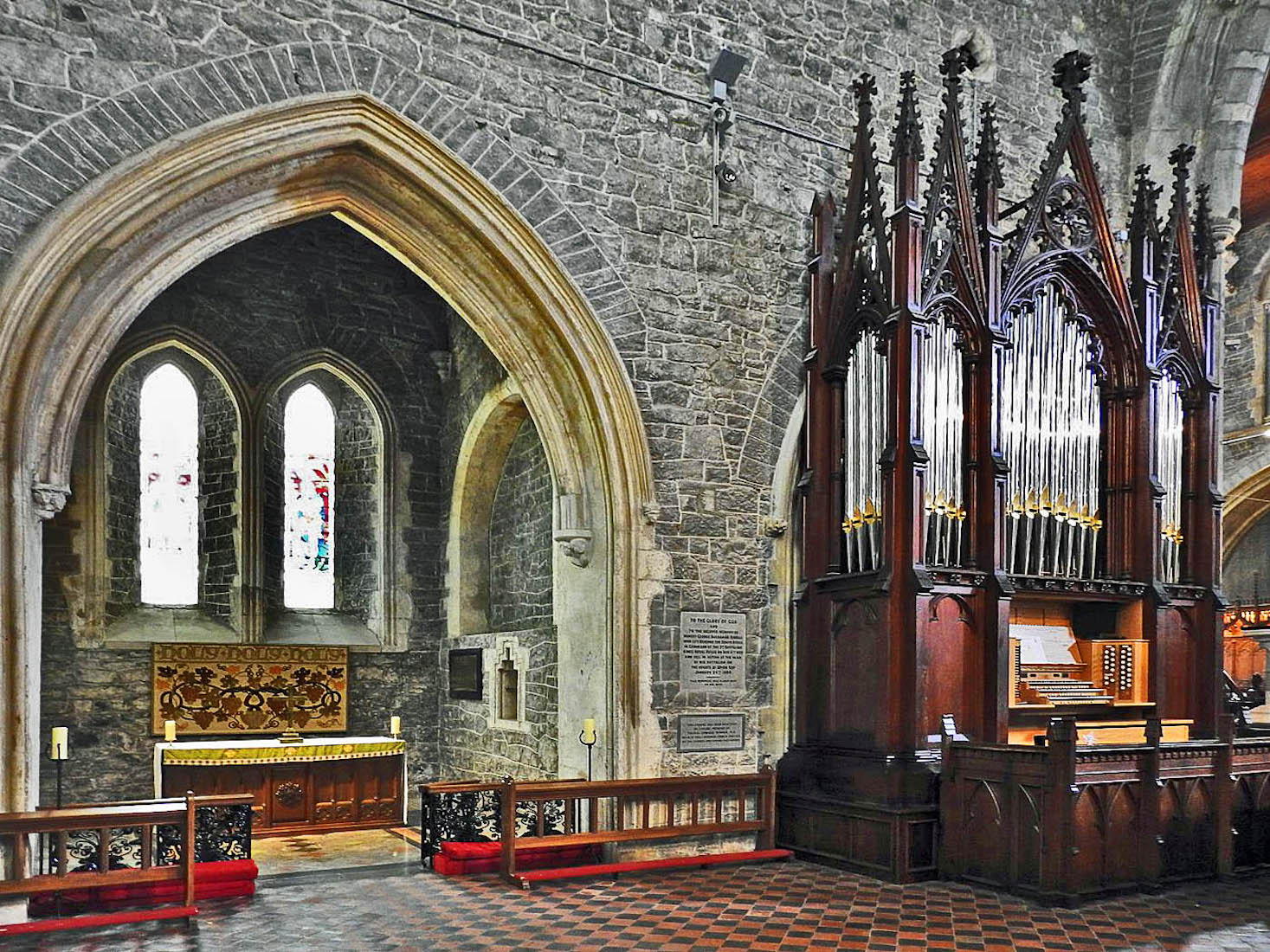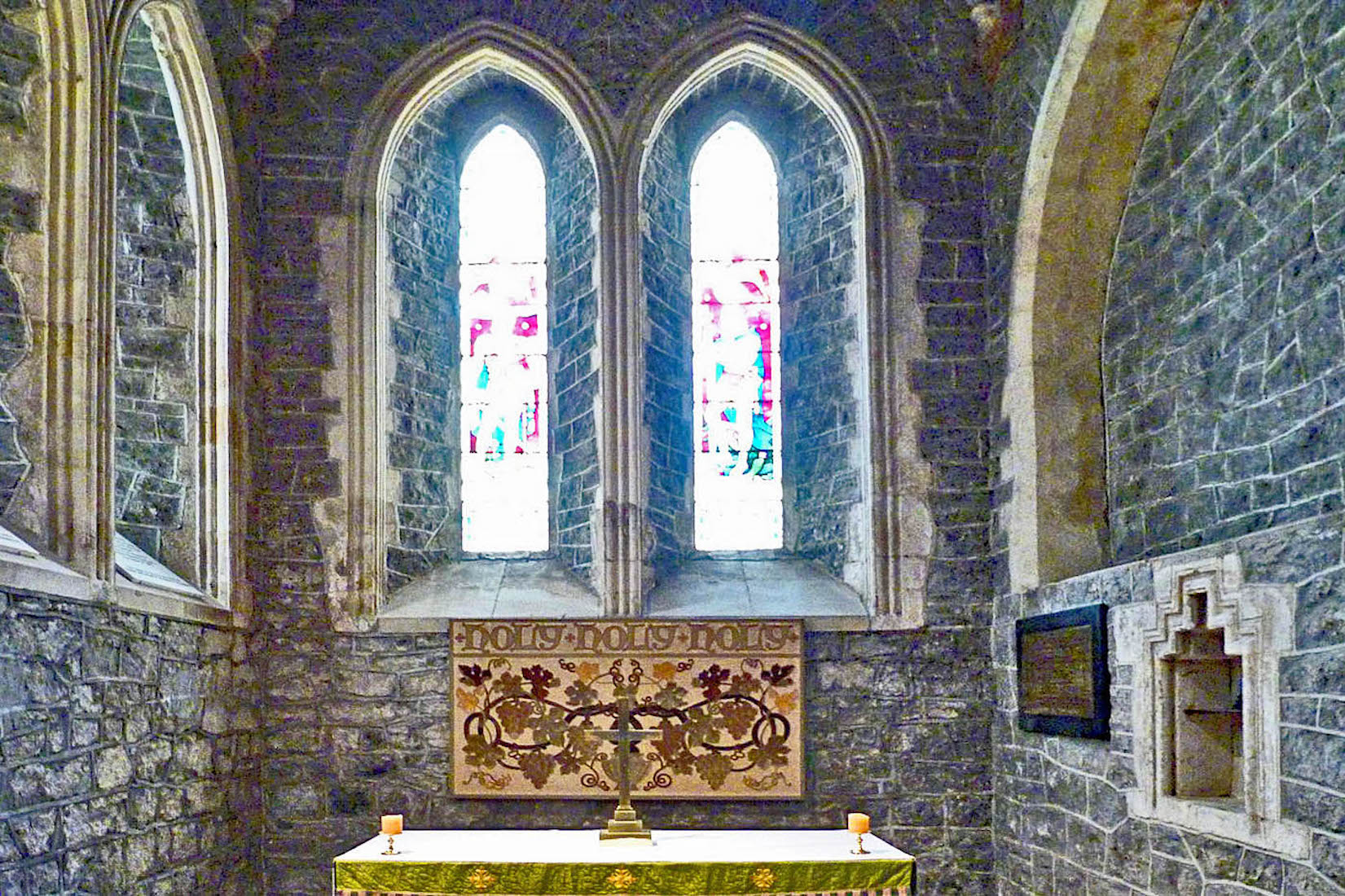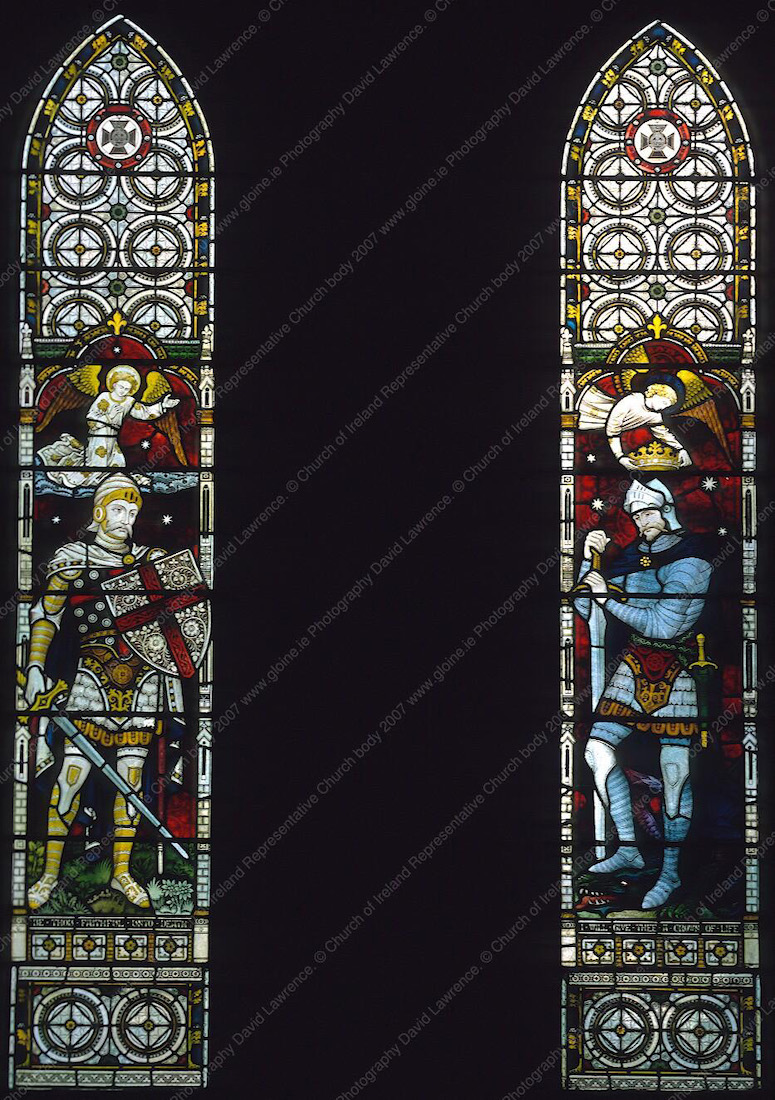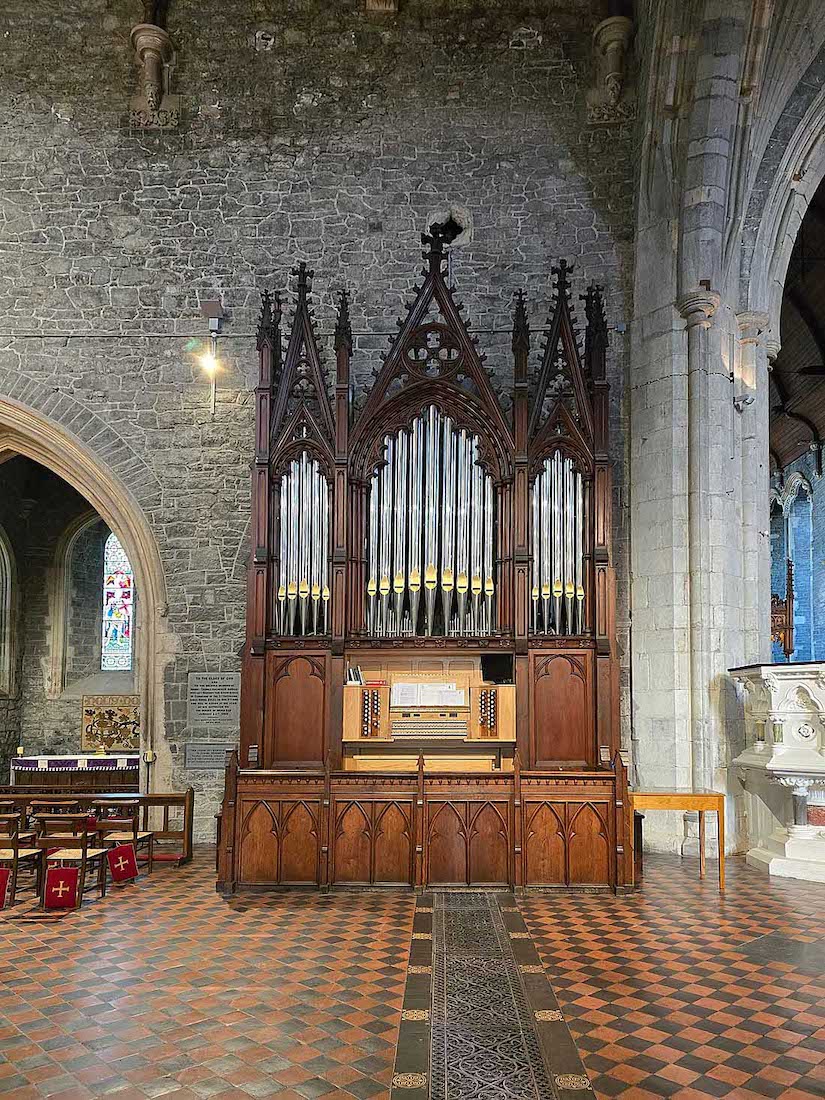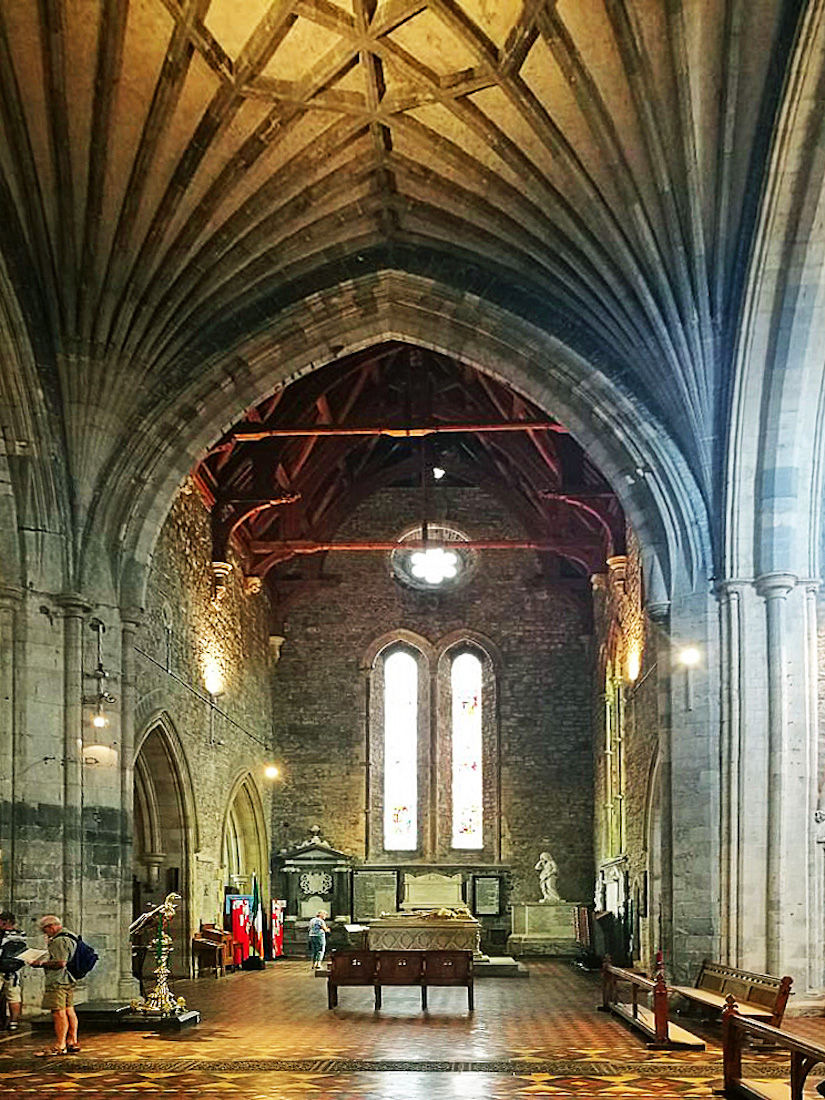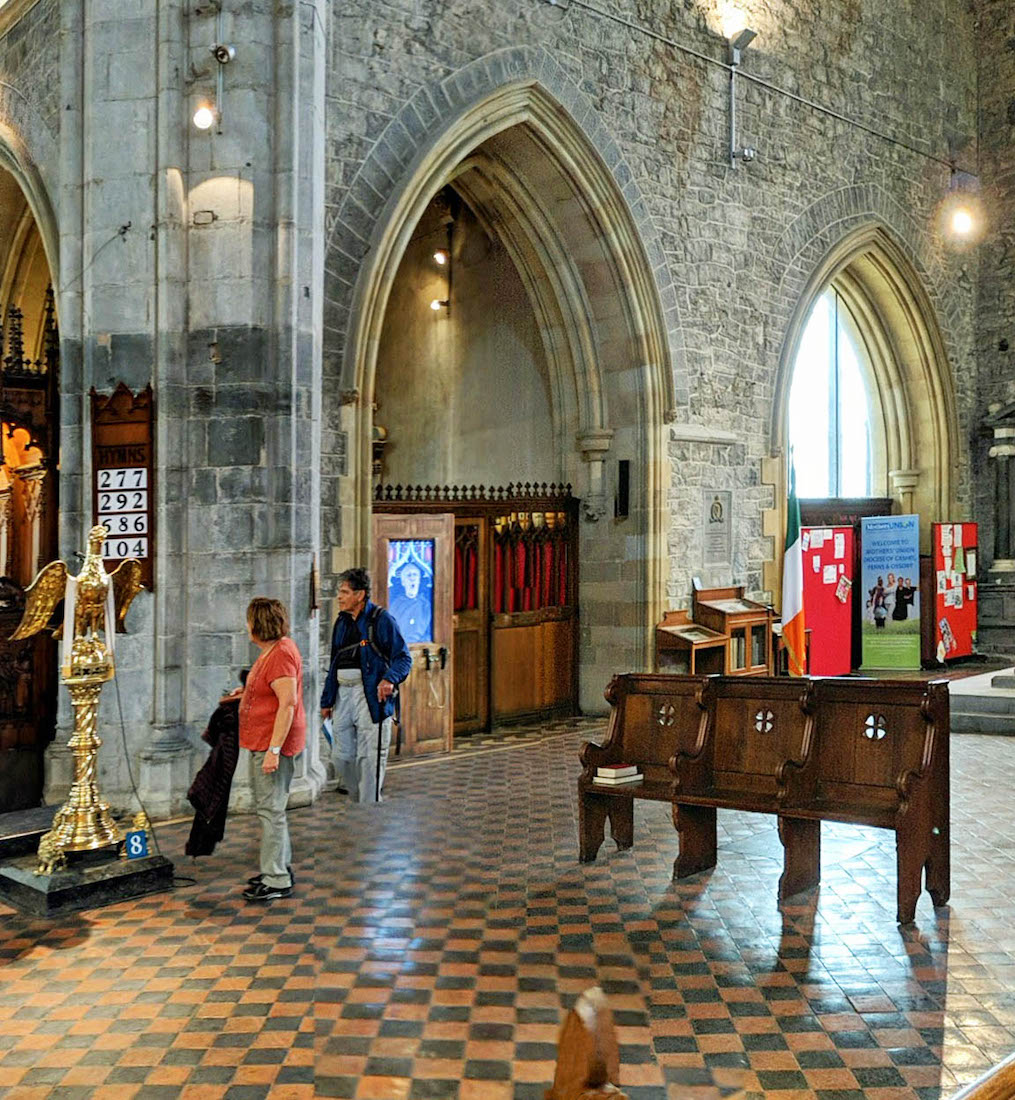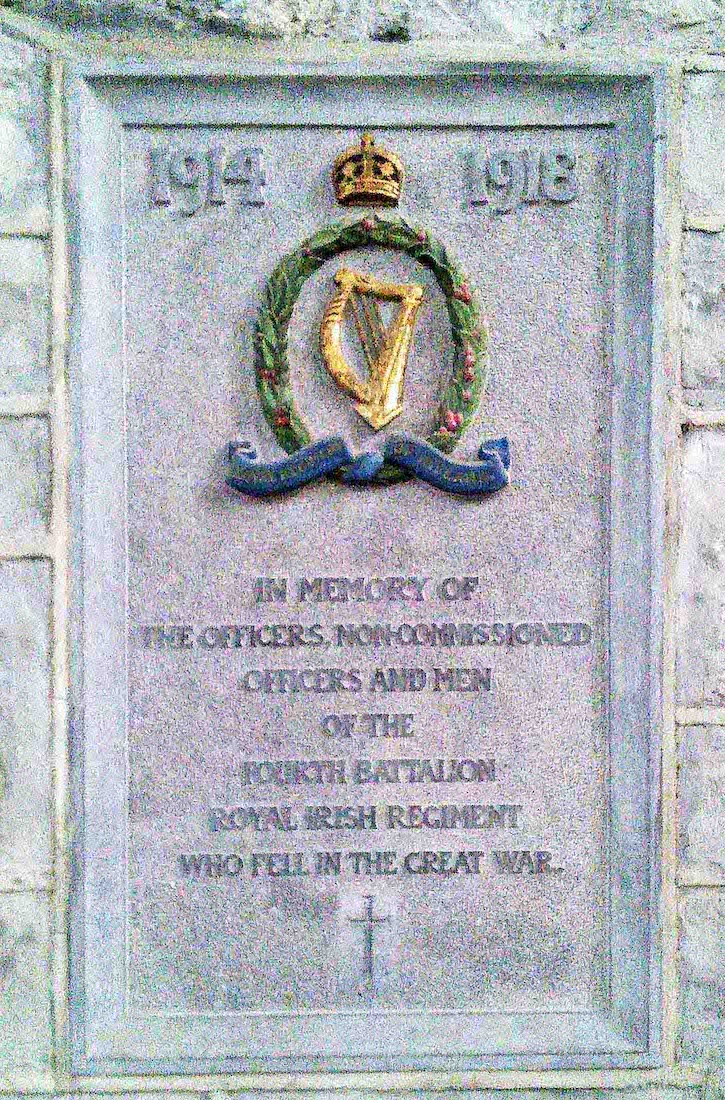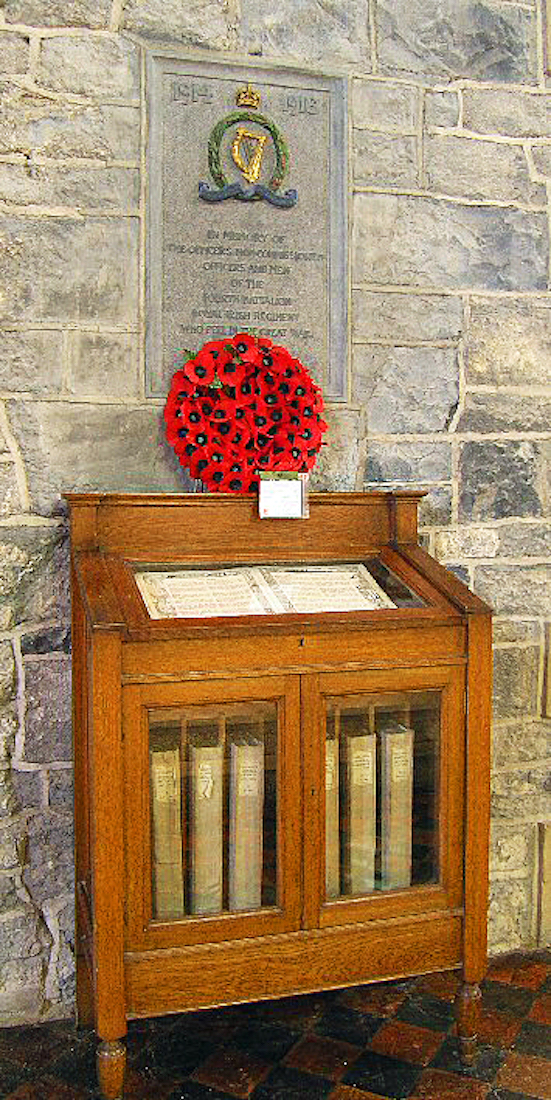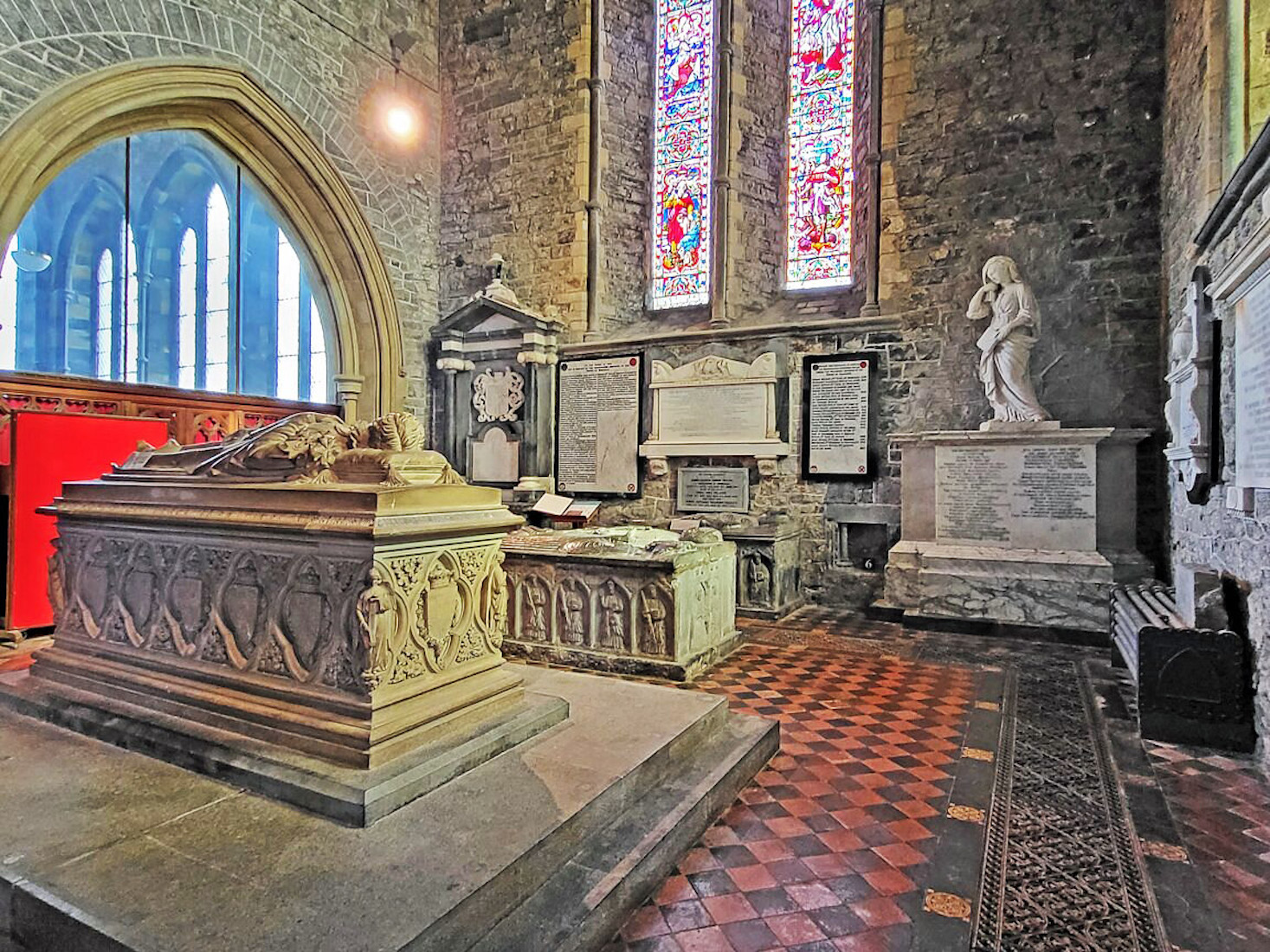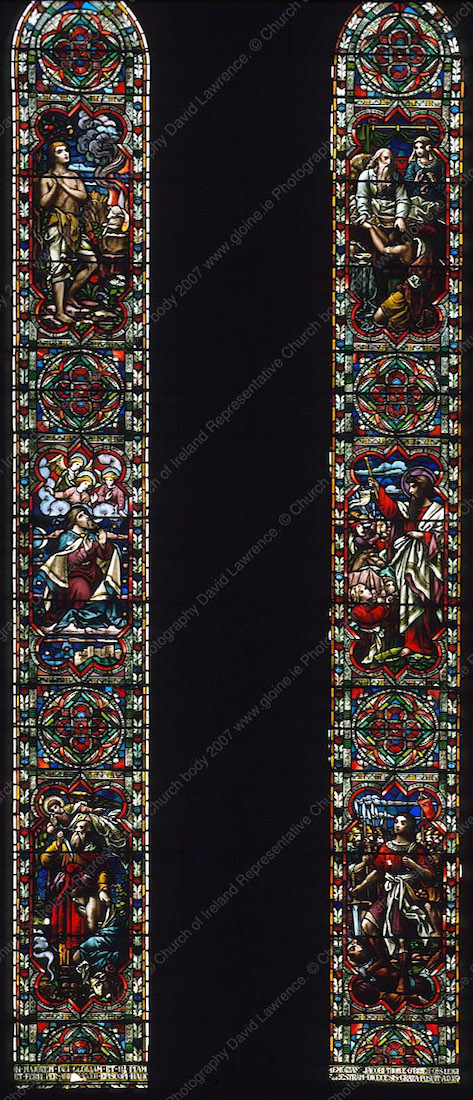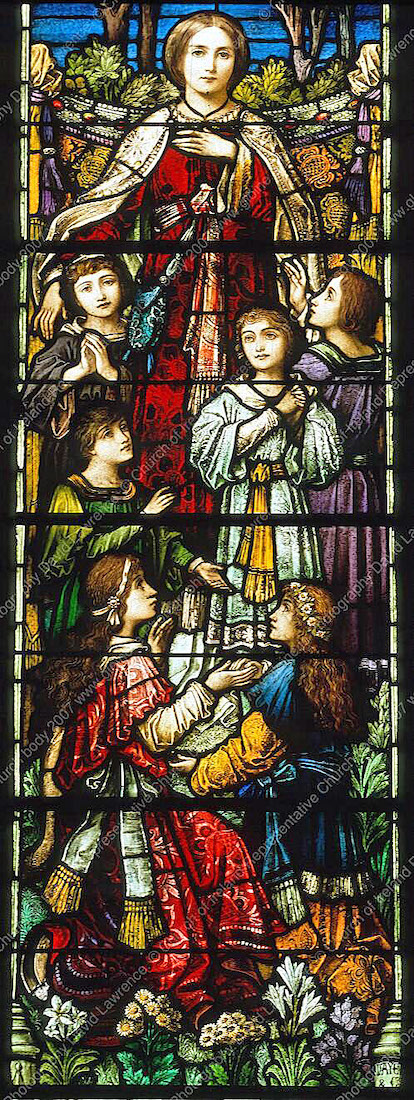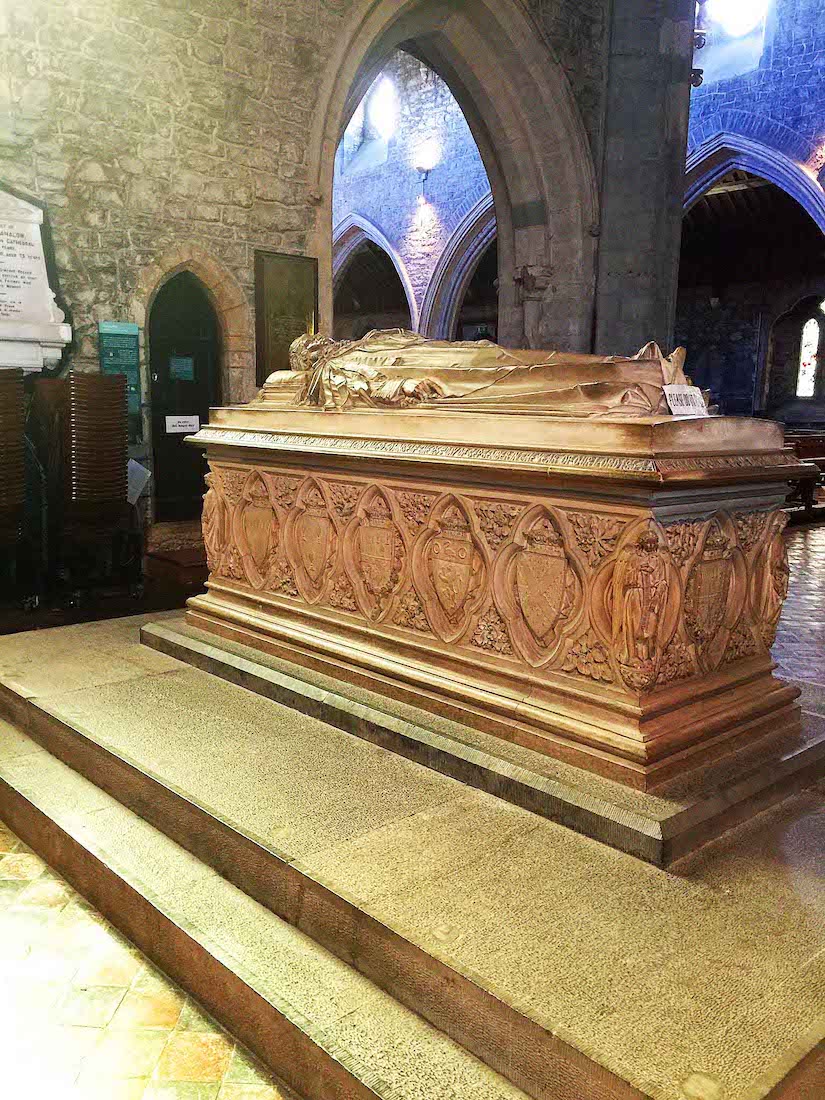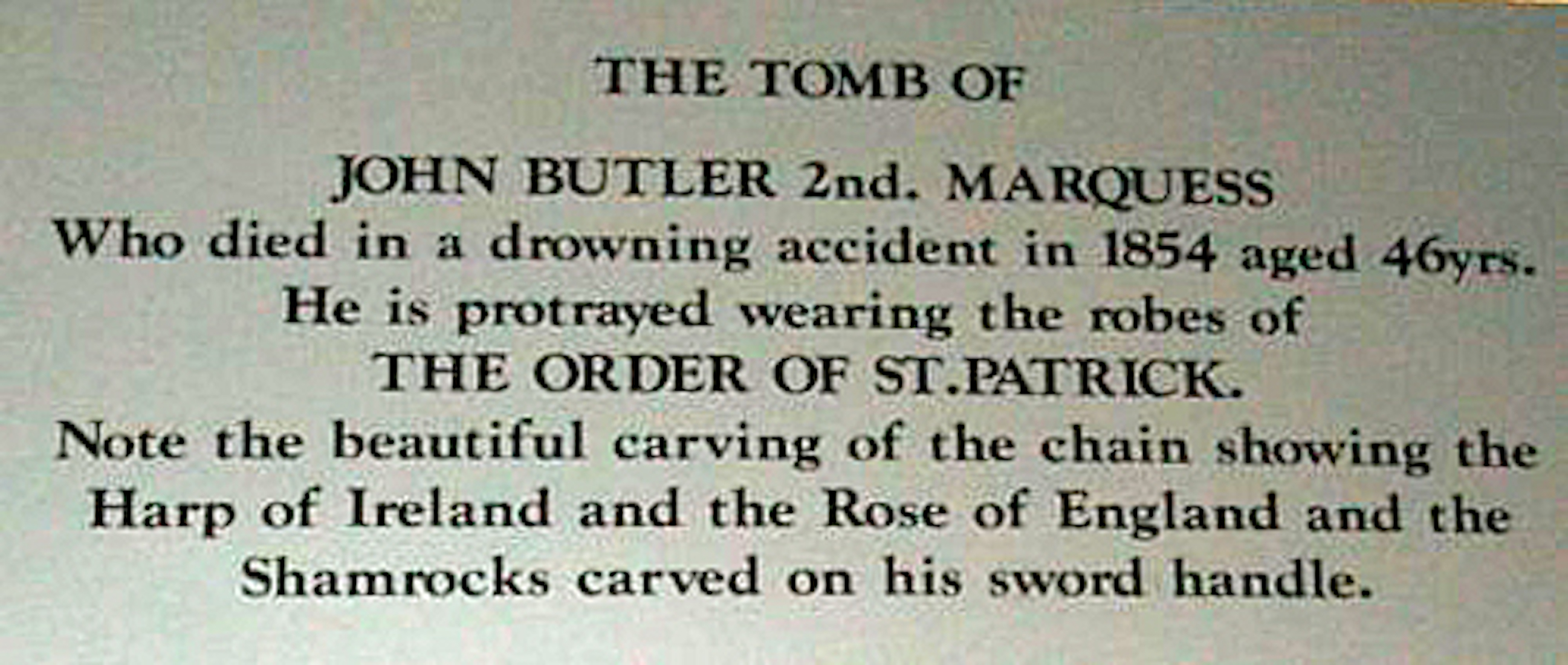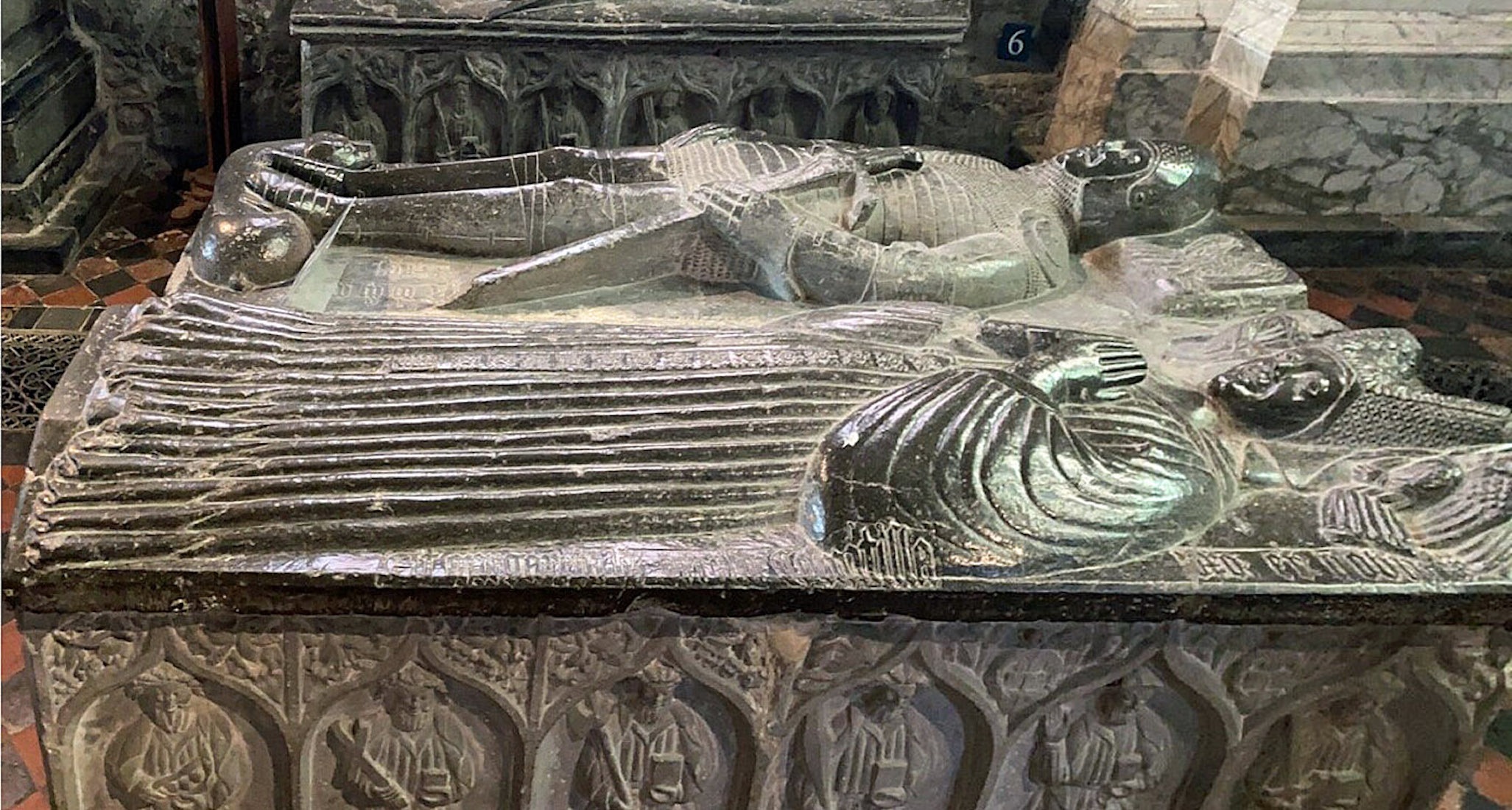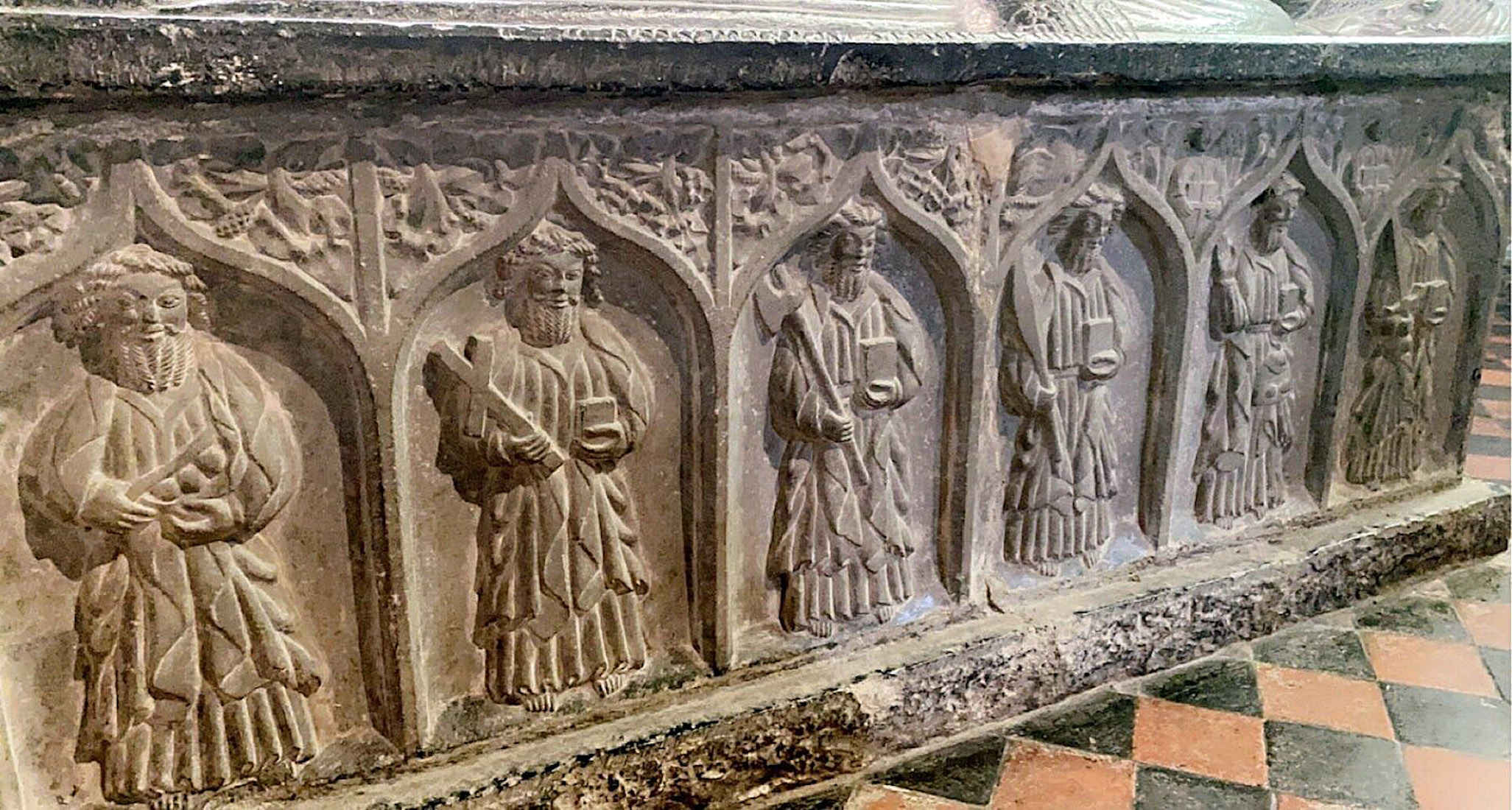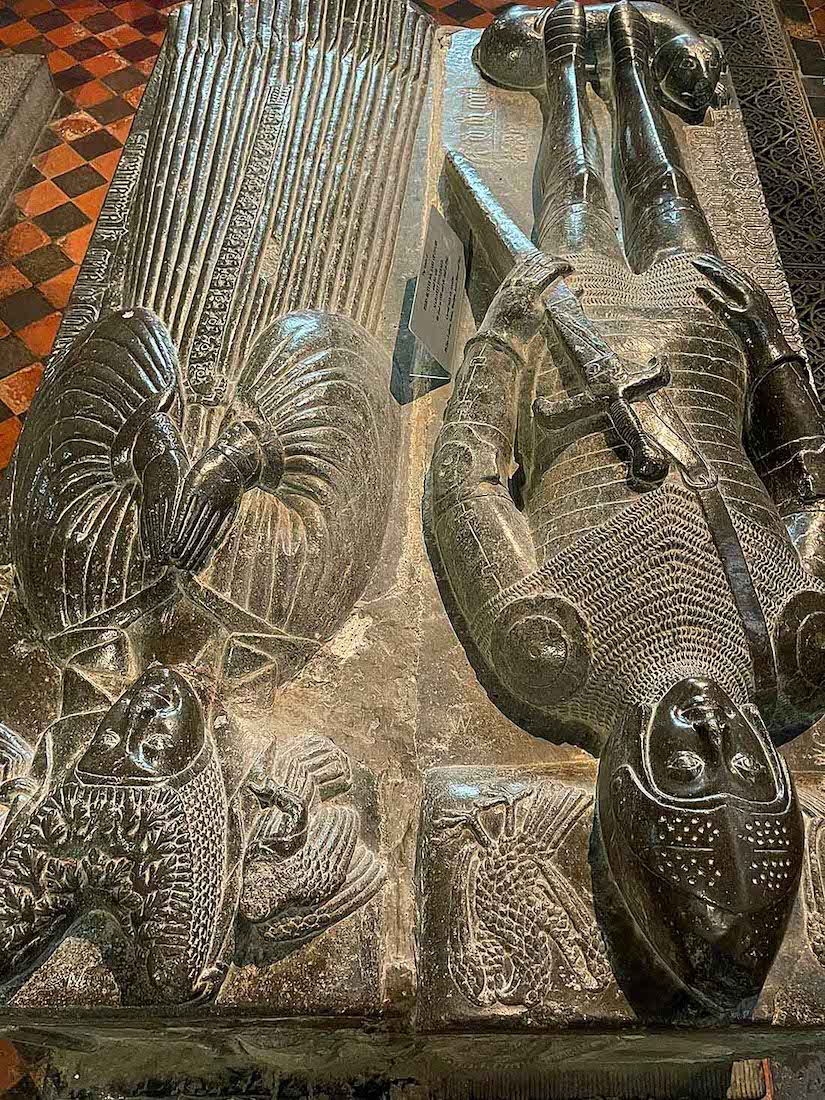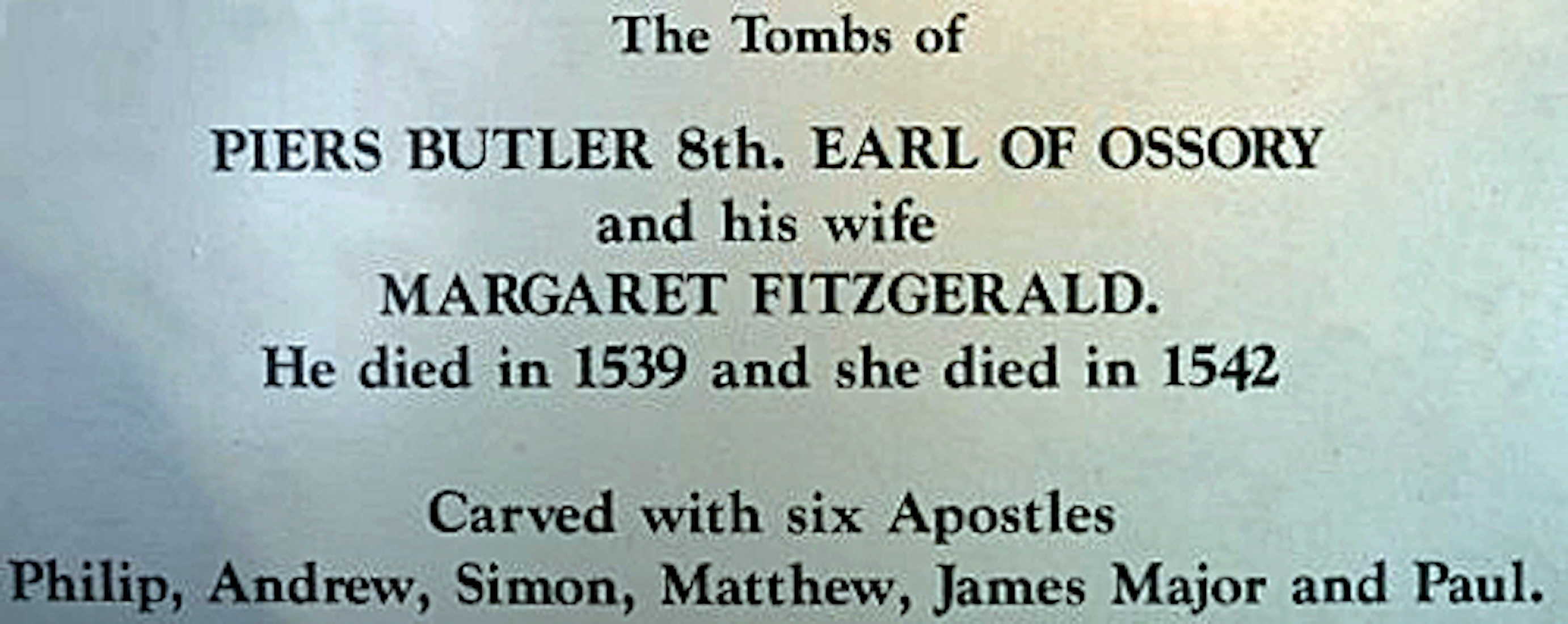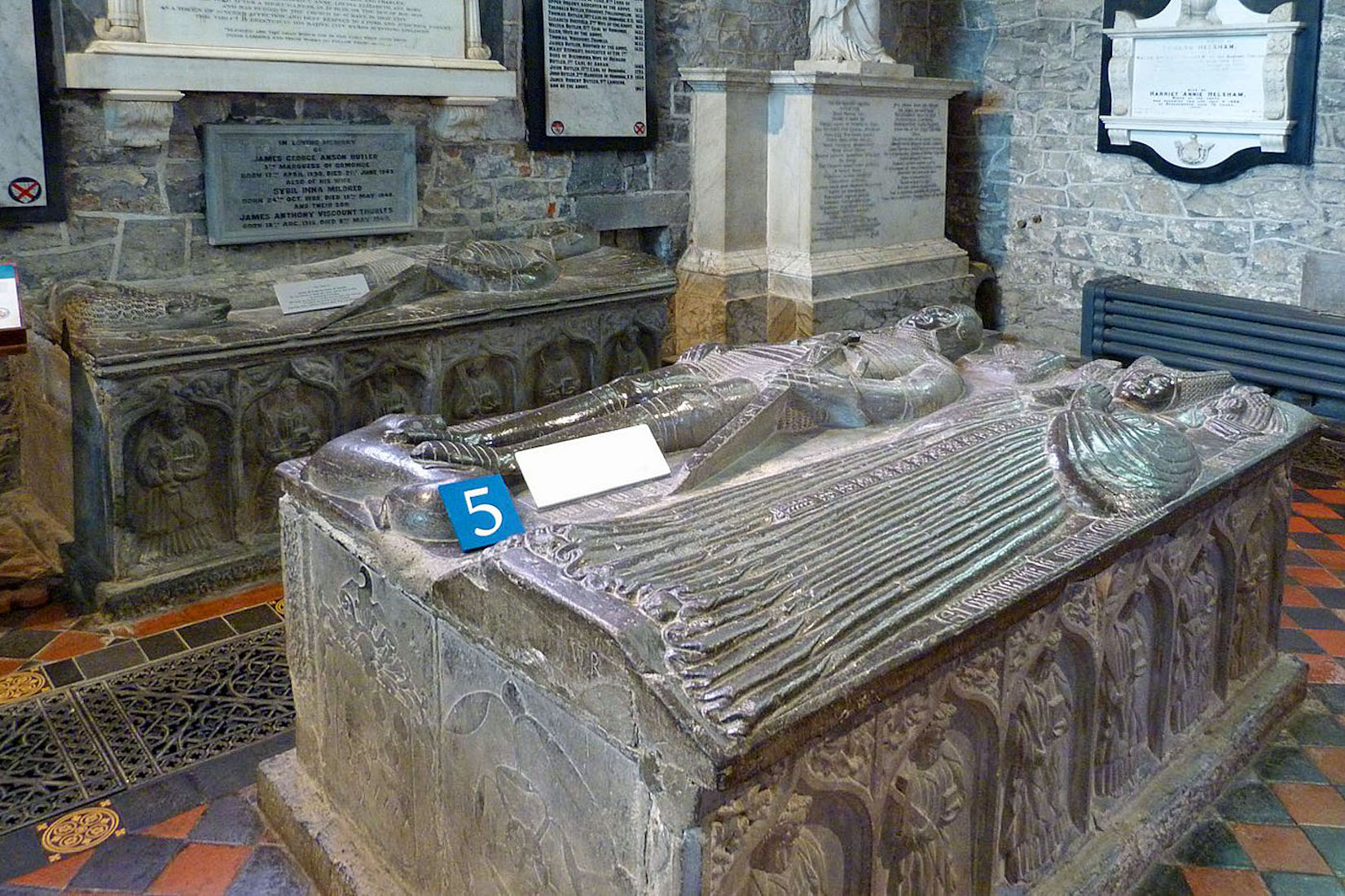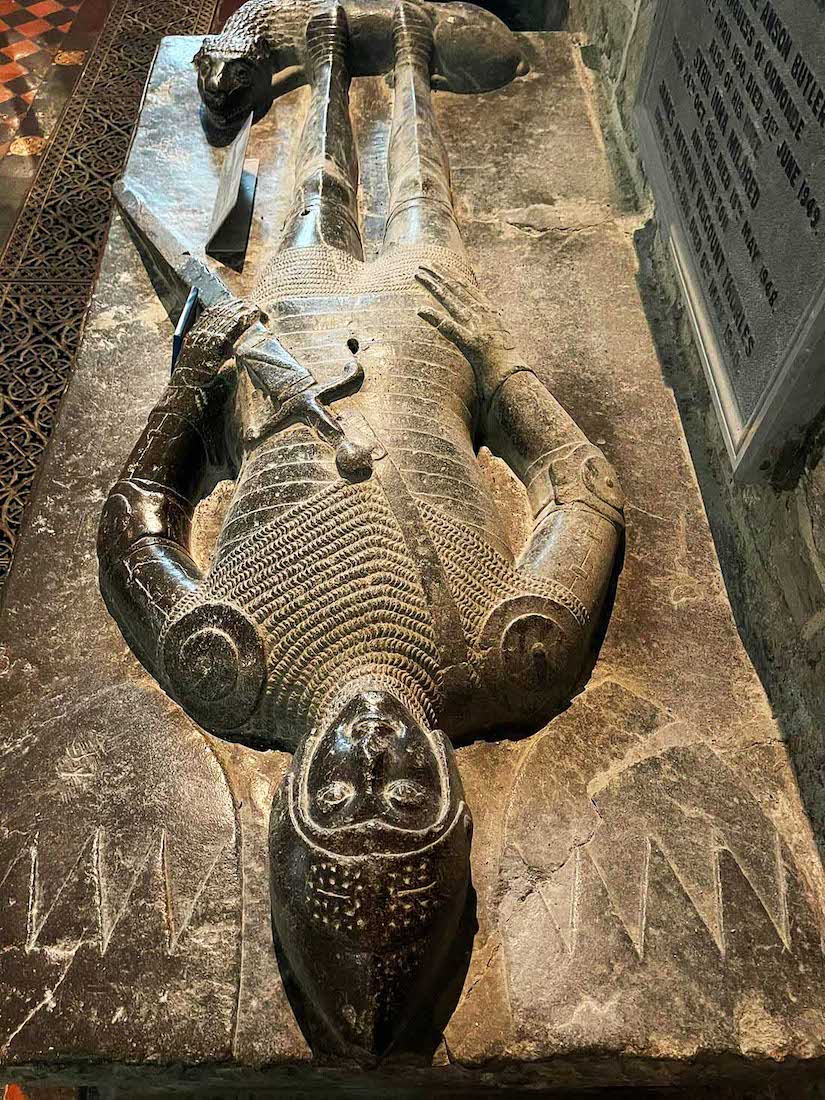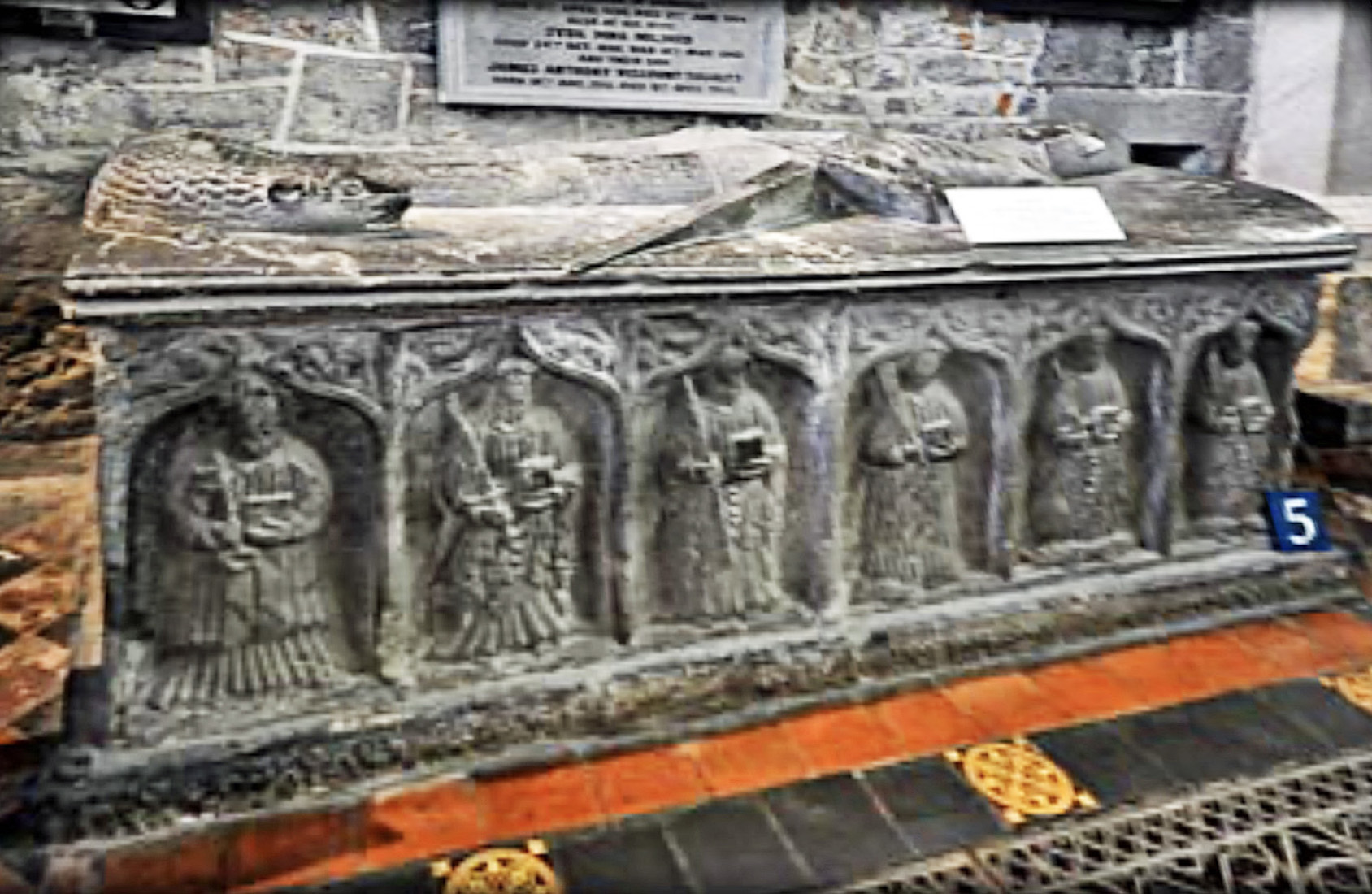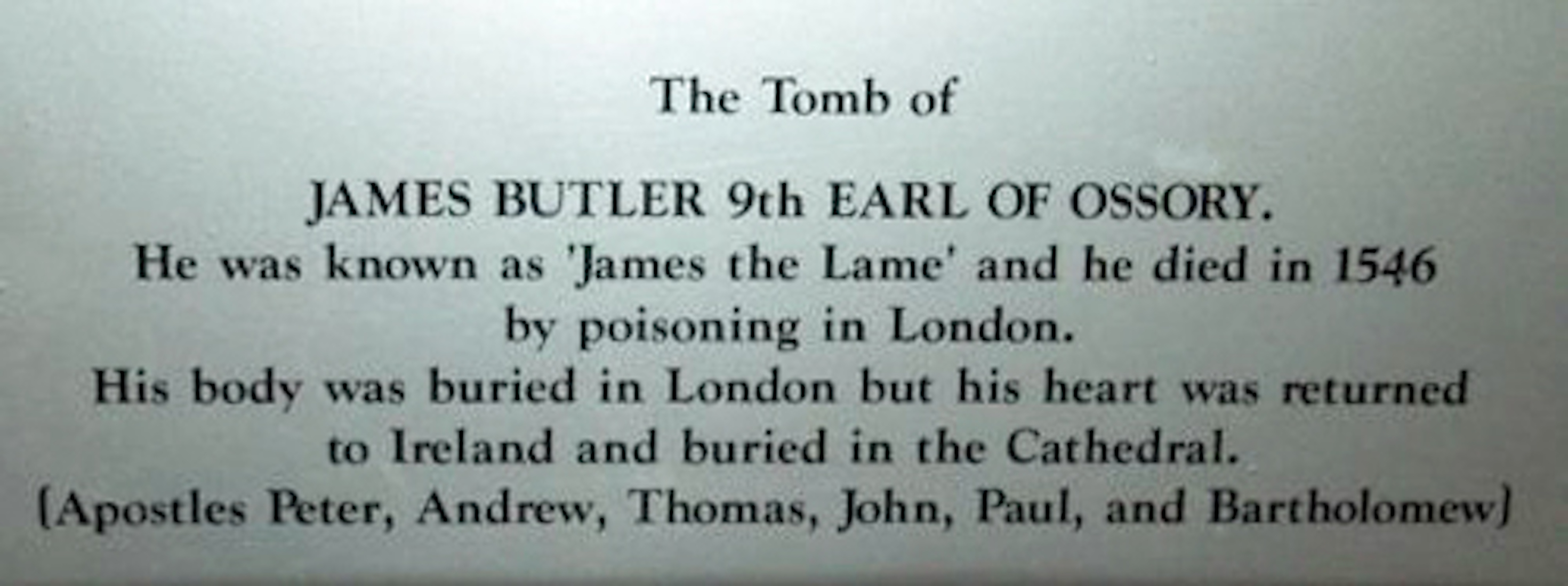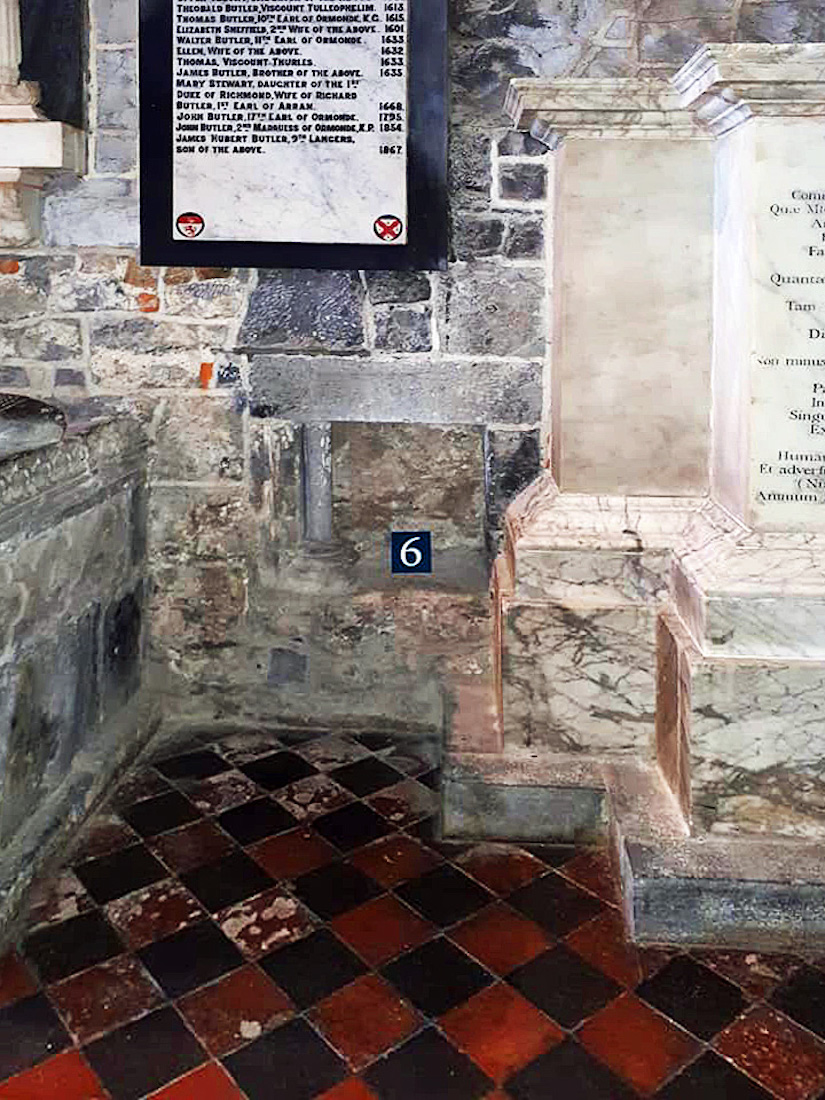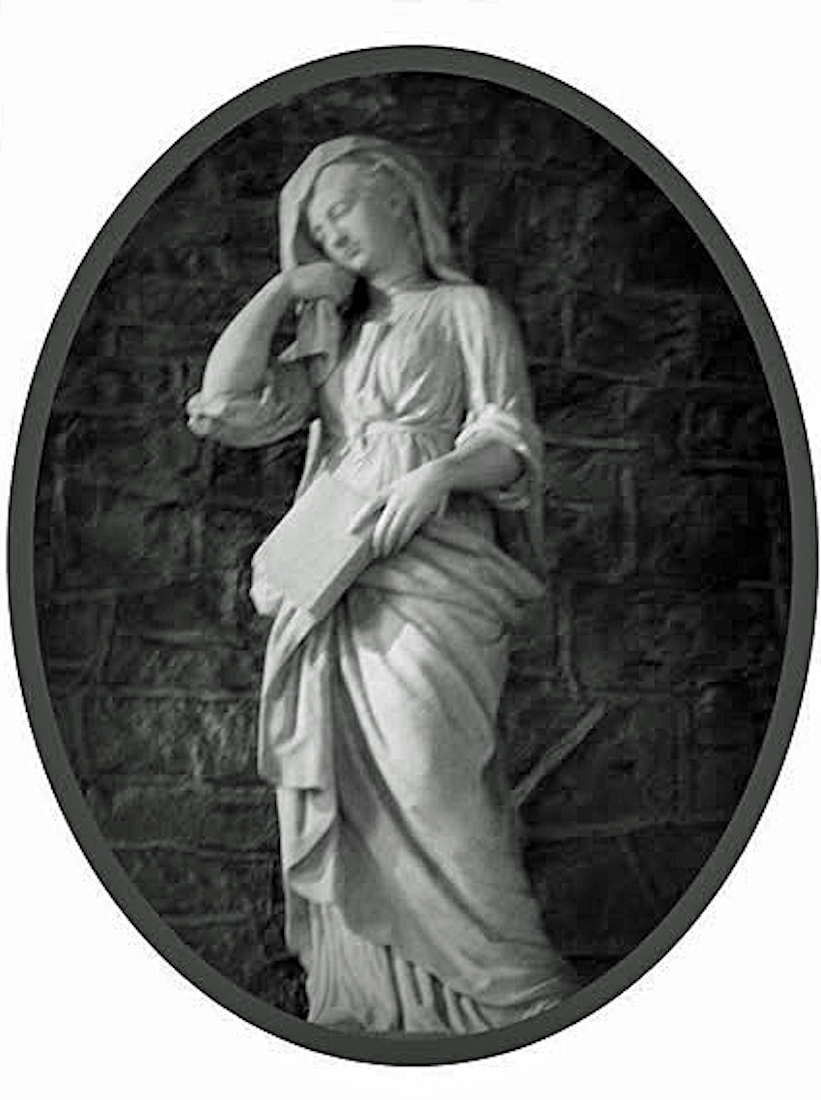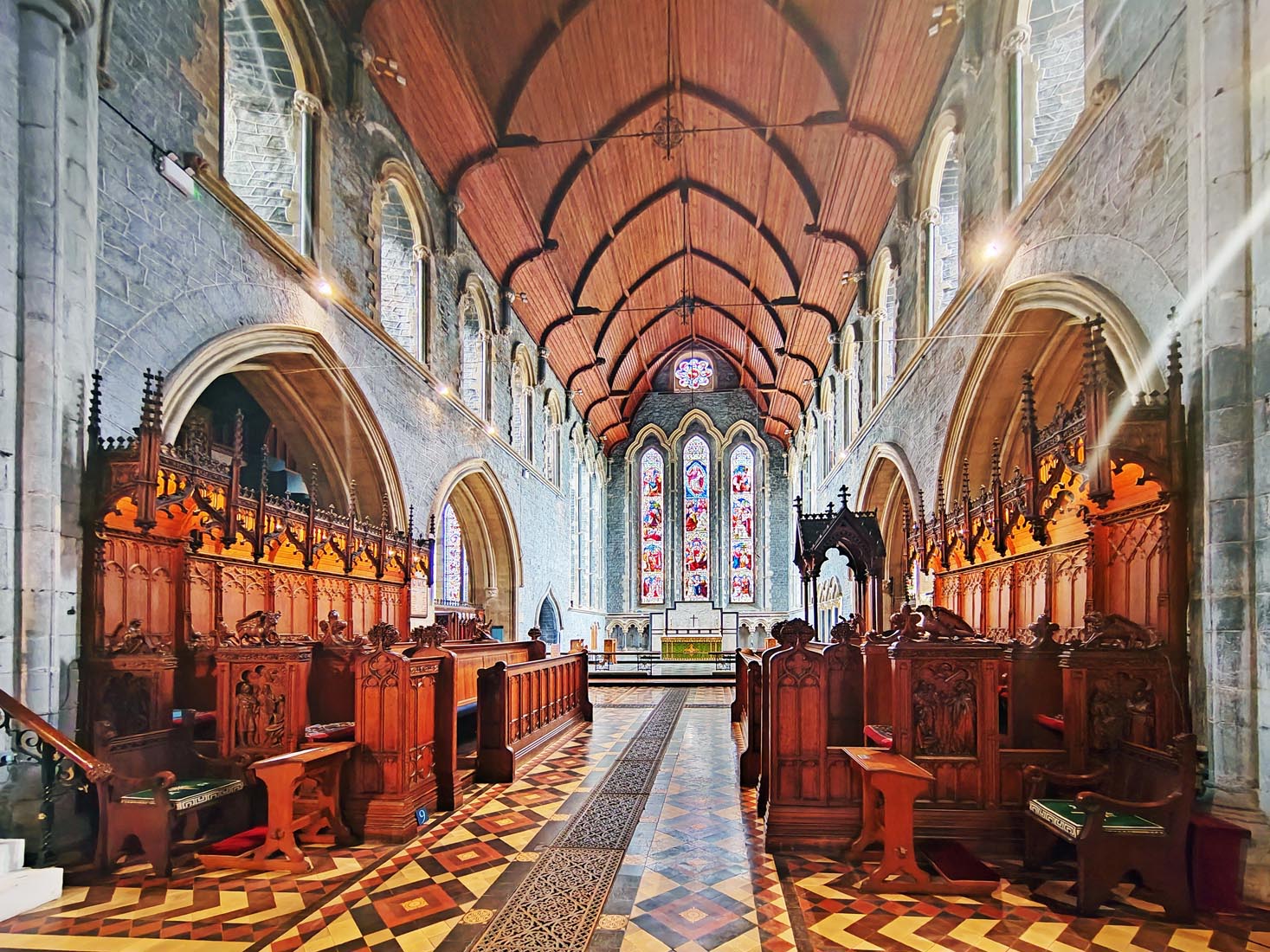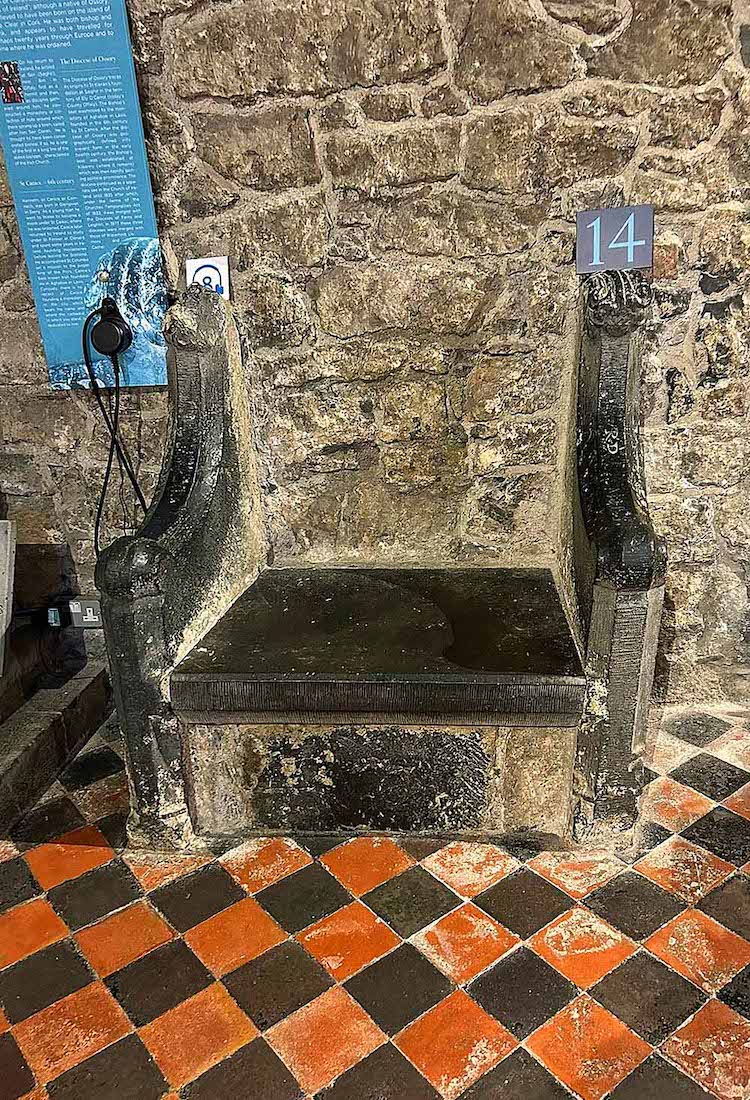
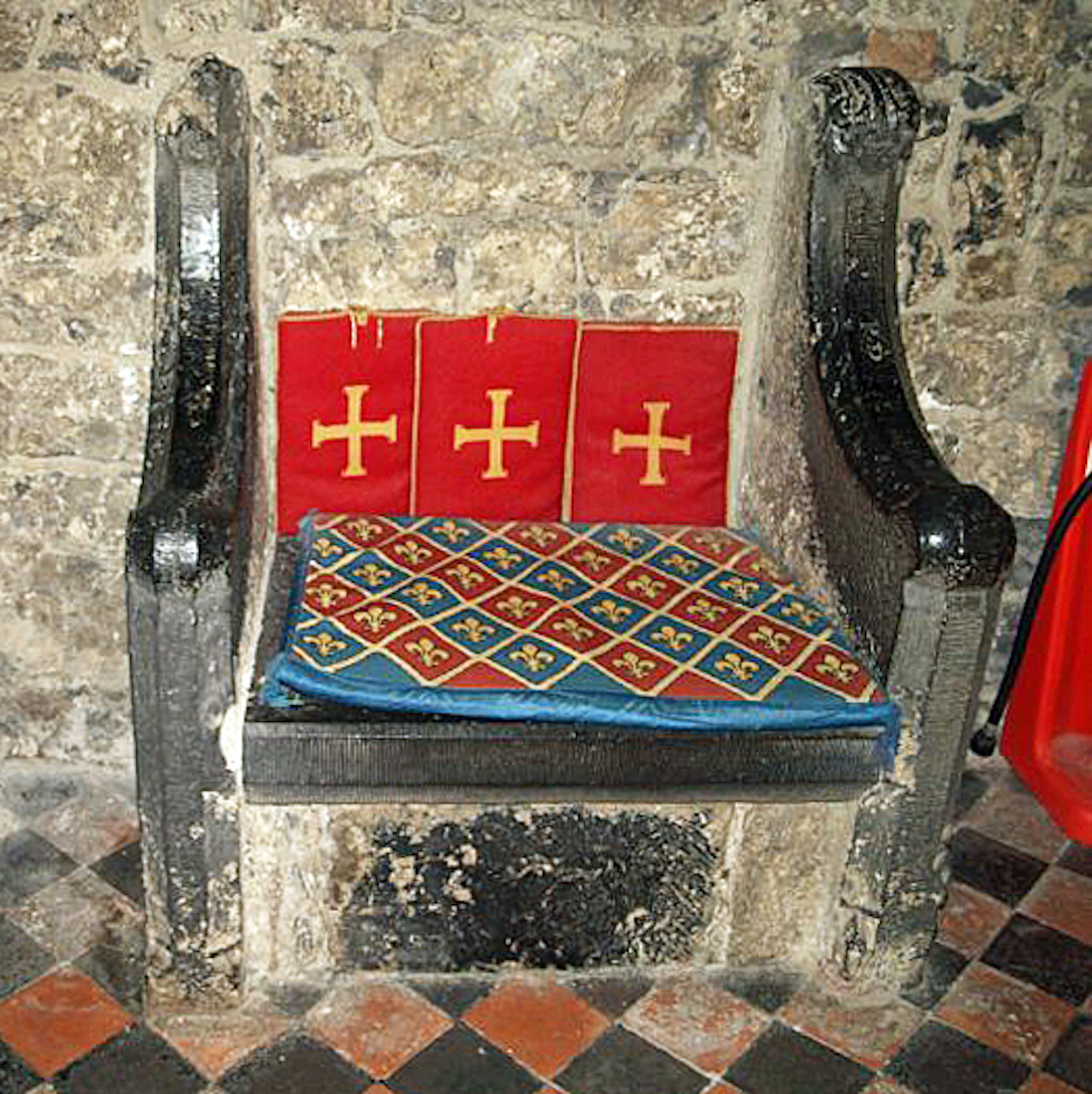
St Kieran’s Chair is located in the Northwest corner of the North transept, and is an extraordinary symbol of episcopal power and ancient history. The Chair was moved from Seir Kieran to Aghaboe and finally to St Canice’s Cathedral. The Chair of St Kieran is the most important item to be moved to St Canice’s Cathedral, as it has been used for the enthronement of the Bishops of this diocese for the past 1,500 years. The word Cathedral comes from the Latin cathedrālis, which means throne and refers to the seat of power of a Bishop, so St Kieran's chair is of the greatest significance to the Cathedral. The Chair had quite a journey before it arrived at St Canice’s Cathedral. It was created for St Kieran’s monastery at Seir Kieran, then it went to St Canice’s main church at Aghaboe and finally arrived at Kilkenny around 1111 A.D. The original chair is an ancient stone, whereas the stone chair that was built about it comes from the 13th Century. [Photo1 Credit: 893verenag] INDEX
62. NORTH WINDOW AND WALL ALCOVE Gl TA
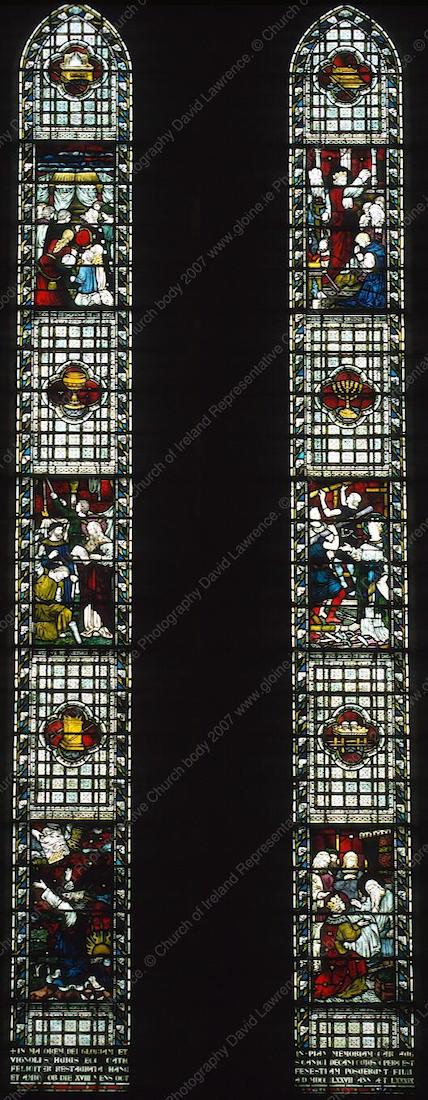
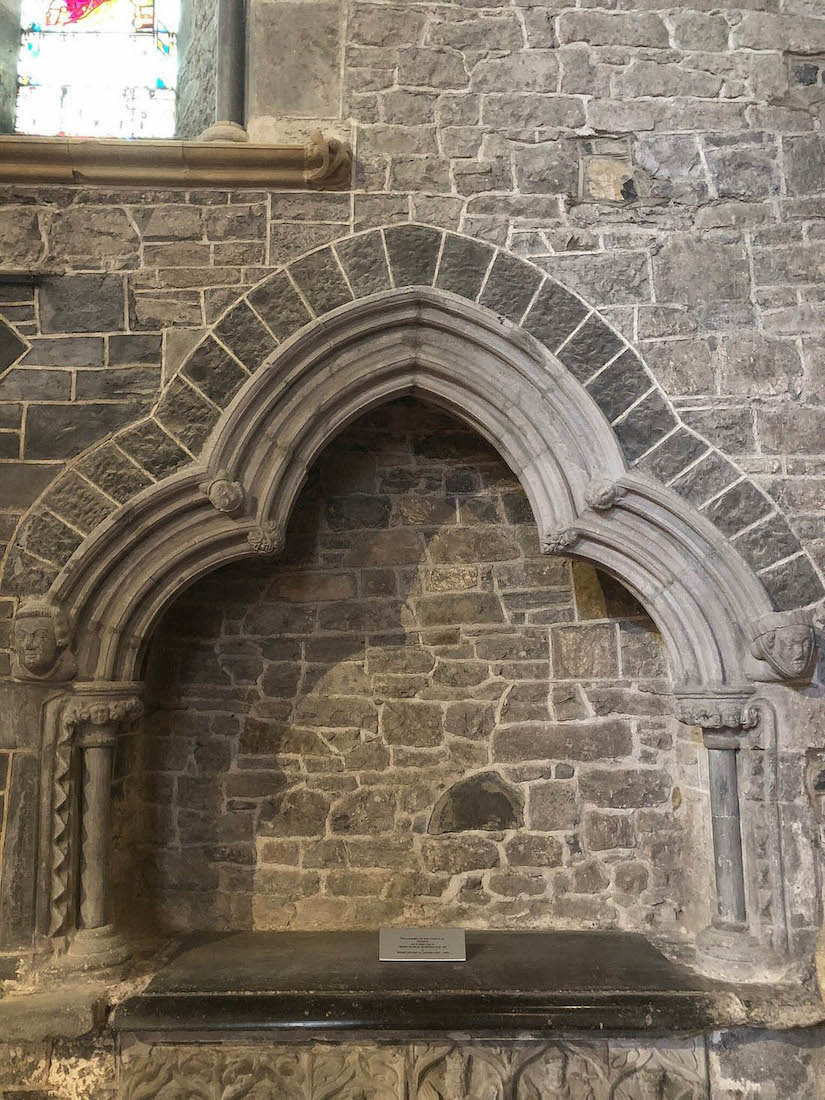
The interesting items in the North wall of the transept are the window, and the large tomb / niche. The window, by Clayton and Bell, London (1877) shows Moses and the Tabernacle, and King Solomon Building the Temple. •• The tomb at right is probably the oldest in the Cathedral, it is either that of Bishop Hugh de Mapilton (1251-1260) or Bishop Geffrey Dt. Ledger (1260-1287). Bishop Hugh de Mapilton is also credited as the ‘first founder’ of the Cathedral, believed to have constructed the crossing tower, transepts, and choir. [Photo2 Credit: Livinit.lovinit]
63. ANOTHER NORTH TRANSEPT VIEW TA
The East wall of the North transept has an archway and the Cathedral organ. Looking up we see that the transept roof has the same design as the nave roof. [Photo Credit: Peter C]
65. LADY CHAPEL TA TA
The chapel has windows to the North and to the East. There is a simple altar with a cross and two candles, standing in front of a small screen covered with vines and with the words ‘Holy Holy Holy’. At right is an aumbry, and a small open niche for placing Eucharistic items. [Photo Credit: Management] [Photo Credit:Massiliano P ]
66. LADY CHAPEL WINDOWS Gl Gl
The two lancets shown at left make up the Northern window of the chapel. They show Holy Baptism, and The Good Soldier. •• At right is the East facing window with lancets showing Faithful Warrior and Crown of Life. •• Both windows date from 1879 and are by Clayton & Bell, London.
67. PIPE ORGAN TA TA
The Cathedral is home to a fine pipe-organ, magnificently reconstructed in 2006 by Trevor Crowe Ltd. Based around the best surviving material from a much altered instrument built in 1853 by Bevington, the organ is a three manual, mechanical action instrument of 47 speaking stops. It is widely considered one of the finest organs in the country. [Photo1 Credit: Latifia R] [Photo2 Credit: Management]
69. IRISH WAR RECORDS TA ••
The plaque is a memorial to the First World War. The text reads: ‘In memory of the Officers, the Non-commissioned Officers, and Men of the Fourth Battalion, Royal Irish Regiment, who fell in the Great War.’ •• A cabinet with war records stands below the memorial. [Photo Credit: CoArmaghontour27] [Photo Credit: irishwarmemorials ]
70. TOMBS AND EFFIGIES TA
Moving into the transept, we find a glass-lined arch opening to the chapter house, and windows in the South and West walls. The South and West walls are lined with memorials, and the transept is occupied by three large tombs with effigies. [Photo Credit: Ronald L]
71. SOUTH TRANSEPT WINDOWS Gl Gl
We look first at the windows. The South window shown at left depicts from left to right, bottom to top,: Abraham sacrificing Isaac, Abraham and the Three Angels, Abel Sacrificing, David with the Head of Goliath, Joseph Rules in Egypt, and Isaac Blessing Jacob. This window was by Mayer & Co, Munich (1876). •• The West window illustrates Good Works, and the Crown of Life. This is also by Mayer & Co., produced in 1904.
72. JOHN BUTLER EFFIGY AND TOMB TA DB
We next look at the tombs and effigies. The most prominent of these belongs to John Butler, 2nd Marquess of Ormonde, KP (1808 – 1854), who was an Irish politician and peer. He held the office of a Lord-in-waiting between 1841 and 1852 and between 1853 and 1854 He was invested as a Knight, Order of St Patrick (K.P.) in 1845. He was elected as Member of Parliament (MP) for County Kilkenny in 1830, and held the seat until 1832. He is shown here wearing the robes of the Order of St Patrick. [Photo Credit: kelli g]
73. PIERS BUTLER AND MARGARET FITZGERALD TA IM
The second tomb is that of Piers Butler and his wife Lady Margaret Fitzgerald. Piers Butler (1467 –1539) was also known as Red Piers. In 1489 Piers was appointed High Sheriff of County Kilkenny. He was knighted in 1497 and in the following year along with his wife Margaret, seized Kilkenny Castle. [Photo Credit: Leanne101]
74. FURTHER DETAILS TA DB
The effigies are wonderfully preserved. The information card tells us that the tomb weepers are the six apostles Philip, Andrew, Simon, Matthew, James Major and Paul. [Photo Credit: Thierry P]]
75. THE SOUTH WALL AND JAMES BUTLER EFFIGY TA
In this row of three tomb/effigies, the final tomb against the South wall belongs to James Butler who died in 1546. He was created Viscount of Thurles in 1535, and Admiral of the Kingdom. After returning from Scotland where he headed the Irish forces in the service of the King, he accused the Lord Deputy of Ireland, Sir Anthony Leger of treason. Later, James and many of his household mysteriously died from poisoning. [Photo Credit: massimiliano p]
76. JAMES BUTLER TA DB MI
Again there is a little card naming the weepers along the side of his tomb. Here they are: Peter, Andrew, Thomas, John, Paul and Bartholomew. [Photo1 Credit:Thierry P ]
77. TRANSEPT MEMORIAL TA
A large memorial stands in the Southeast corner of the transept. The monument features the coat of arms of the Butler family and commemorates several members of the family. The monument includes inscriptions commemorating Theobald Walter, Theobald Butler (died 1230), Theobald Butler (Lord Justice), Theobald Butler (died 1285), and other members of the Butler family, extending to James, the 5th Earl. [Photo Credit: permia]
78. LEPERS SQUINT SC SC
Just West of the James Butler tomb is the lepers squint (now sealed) – a small opening in the wall from where those with leprosy heard mass. The lepers squint awakens complex emotions in its modern day witnesses. At once we have empathy for those with leprosy, recognising their pain, loss and humiliation, yet this small opening was also an attempt to reach out to those who had been outcast. [Photo Credit: ] [Photo Credit: ]
79. ANNA COX SCULPTURE SC
Near the Lepers Squint is the Cox memorial showing this sculpture of Anna Cox carved by P. Scheemakers. Anna was the wife of Michael Cox, Bishop of Ossory, and later Archbishop of Cashel. Anna and Michael were married in 1745, but Anna died in childbirth that same year. The monument proclaims: ‘How great the loss! How small the consolation!’ [Photo Credit: ]
80. CHOIR Wiki
We leave the South transept, returning to the crossing, and so to the choir. There are some special carvings on the choir stalls. For example we notice the winged ox at left, and the eagle at right. [Photo Credit: Twasonasummersmorn]


